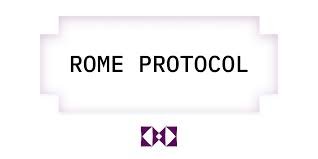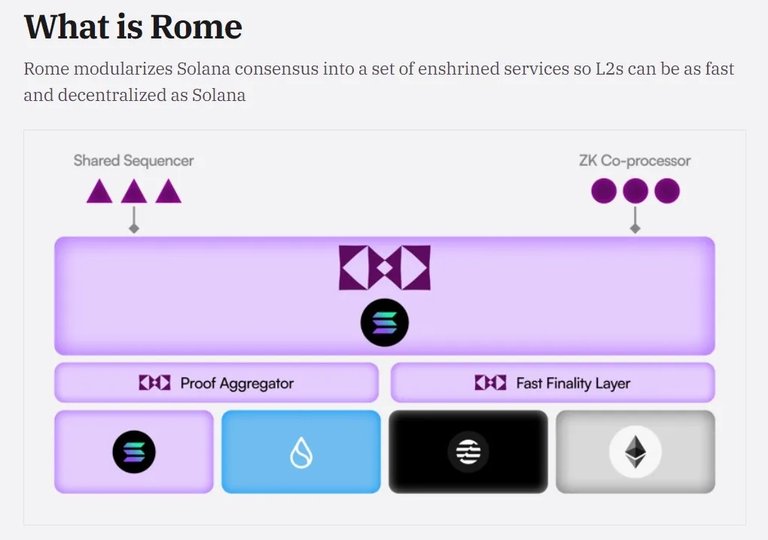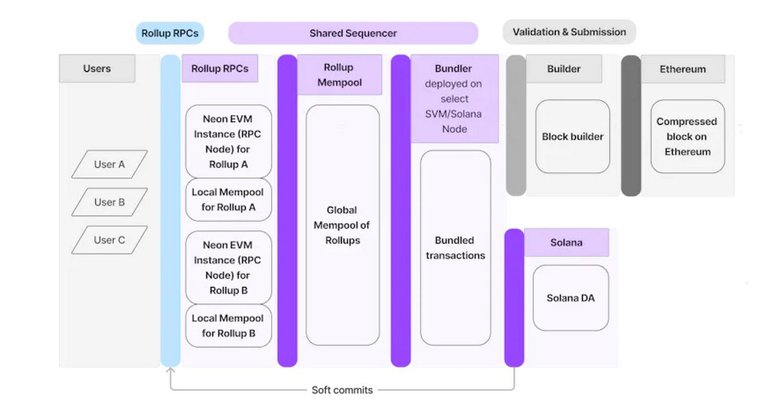Rome Protocol has officially integrated with the AggLayer.

Solana-powered interoperability and scalability layer Rome Protocol has officially integrated with the AggLayer, a cutting-edge technology co-developed by Polygon Labs.
According to a press release shared with Cryptonews, this integration enables seamless zero-knowledge (zk)-enhanced interoperability. This advancement allows developers to create decentralized applications (dApps) that simultaneously harness Ethereum’s robust security and Solana’s high-speed performance, marking a significant evolution in blockchain technology.
The Rome Protocol team emphasized that this development is a crucial milestone toward a truly interconnected blockchain ecosystem, as envisioned by the AggLayer team.
Marc Boiron, CEO of Polygon Labs, highlighted that this collaboration provides developers with the advantages of both Solana and Ethereum without compromise. “This is a significant step toward a fully integrated, high-performance blockchain ecosystem, one that extends across all of Web3, rather than remaining confined within isolated networks.”
Furthermore, the integration of AggLayer’s Ethereum connectivity with Rome Protocol’s interoperability framework provides developers with a high-performance, low-latency solution capable of leveraging Solana’s remarkable transaction speed of over 4,800 Transactions per Second (TPS). TPS measures the network’s capacity to process transactions in real time.
This integration strategically combines Rome’s Interop framework, Shared Sequencer, and EVM execution layer with AggLayer’s zk-powered network aggregation. As a result, developers gain access to frictionless cross-chain composability between Ethereum and Solana, enabling more scalable, censorship-resistant, and high-performance applications that operate with enhanced security and minimal latency.

Additionally, this collaboration facilitates unified liquidity and seamless asset movement across multiple blockchain ecosystems, further advancing the vision of a more interconnected decentralized finance (DeFi) landscape.
“Each blockchain ecosystem possesses distinct strengths, but real innovation emerges when these advantages are bridged,” stated Anil Kumar, CEO and Co-Founder of Rome Protocol. “Seamless interoperability is a crucial step toward mainstream adoption of decentralized technologies, delivering more scalable, secure, and user-friendly applications to the market.”
AggLayer Expanding Its Reach
Polygon Labs continues to innovate in the blockchain space by expanding its AggLayer initiative, a network designed to aggregate and streamline cross-chain interactions.
Initially introduced a year ago, the AggLayer serves as a public infrastructure layer that unifies user bases and liquidity across various blockchains while utilizing Ethereum as a settlement layer. Functioning as a centralized protocol, it aggregates zero-knowledge (ZK) proofs from connected chains to enhance security and efficiency.
Notably, the AggLayer is designed to address pressing issues such as blockchain fragmentation and scalability limitations, positioning itself as a game-changer in the industry.
Furthermore, blockchain infrastructure firm Gateway FM recently announced that the Prism Network had successfully upgraded to the execution client CDK-Erigon.

“This upgrade ensures a more efficient, reliable, and developer-friendly network while maintaining seamless L1 settlement with AggLayer,” Gateway FM stated.
In addition, Wirex Pay’s new testnet has just gone live on Polygon CDK, further demonstrating the expanding utility of the Polygon ecosystem.
Meanwhile, Assetera, a European trading facility specializing in blockchain-based securities, announced a strategic partnership with institutional-grade asset manager Ondo Finance. This collaboration will enable the listing of Ondo Finance’s institutional-grade tokenized US Treasuries fund on Assetera’s Polygon-based platform, further reinforcing the growing institutional adoption of blockchain technology.
https://www.reddit.com/r/solana/comments/1iyk17m/rome_protocol_has_officially_integrated_with_the/
The rewards earned on this comment will go directly to the people( @tsnaks ) sharing the post on Reddit as long as they are registered with @poshtoken. Sign up at https://hiveposh.com. Otherwise, rewards go to the author of the blog post.